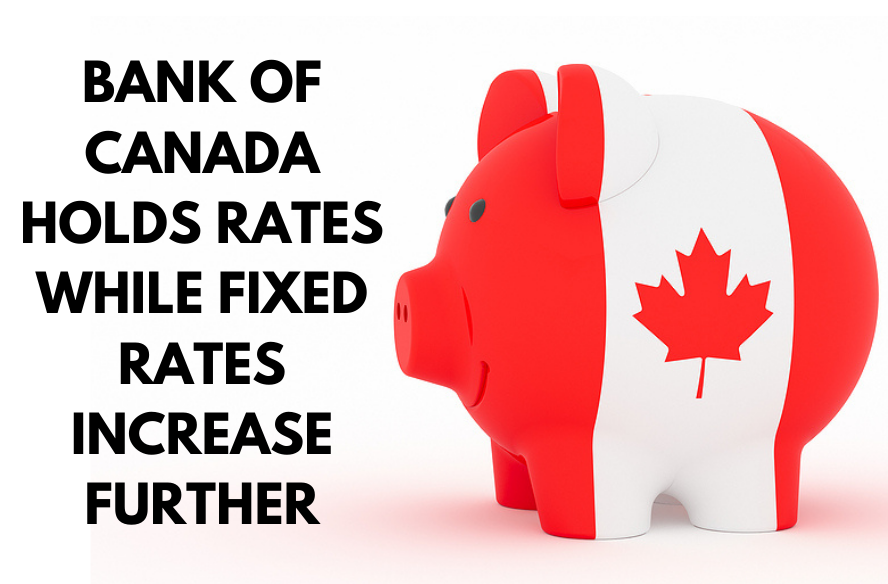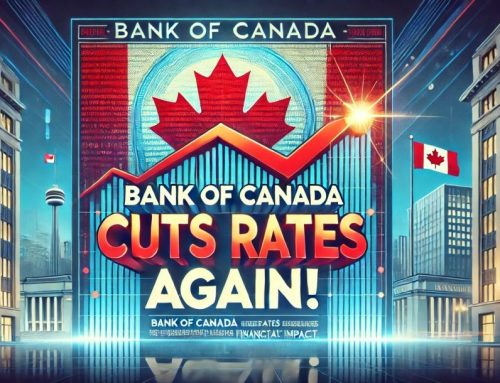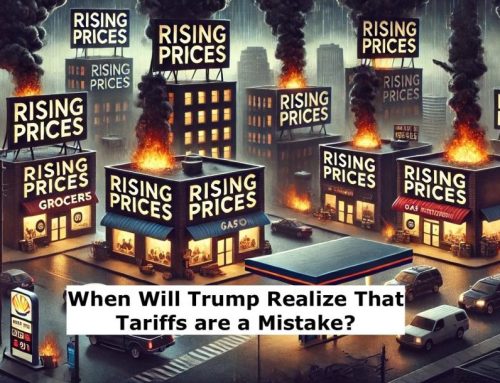Just as expected, the Bank of Canada announced this morning that they will be maintaining their overnight rate. This is what mortgage lenders use to base their prime rate. When the overnight rate remains unchanged, so does prime rate. It’s important to note that the BOC rate does not have any direct effect or relation to fixed mortgage rates. It can sometimes have an indirect influence on them however. What we’re seeing now is a perfect example of fixed mortgage rates moving independently of the BOC rate. Fixed mortgage rates are increasing, while the BOC rate remains unchanged.
There are eight scheduled rate announcements from the BOC each year, and any changes can generally be expected to fall on one of these dates. Fixed mortgage rates have no such schedule however, and changes happen at any time, with no limit to the number of changes over the year.
More Fixed Mortgage Rate Increases
Despite the BOC announcement, fixed mortgage rates continue to increase this week, with most lenders putting them up by another 0.15%. We’ve now seen them increase for three weeks in a row. This brings the lowest 5 year fixed rate to 1.84%*. The regular market 5 year fixed rates have now climbed back up over 2%.
Fixed mortgage rates are largely influenced by bond yields, which have been trending upward since the beginning of February. While the trend has not yet reversed, it has showed signs of leveling off, as well as possible reversal. In my first blog of the year on what we can expect from fixed mortgage rates in 2021, I mentioned that we’d see some rate fluctuation in either direction over the course of the year. What I didn’t expect was to see such a large increase in such a short period of time. Within the past three weeks, we’ve now seen fixed mortgage rates rise as much as 0.45%. If you’ve read my last few blogs tracking the development of these increases, you’ll know that I expect the increases to be temporary. I expect this to be the last round of fixed rate increases before we see bond yields start to reverse, which would then place downward pressure on fixed rates once again. I would not expect to see fixed rates drop down to as low as where they were in February, but I do expect them to drop. Of course, anything can happen and time will tell.
Variable Rate Movement
While fixed mortgage rates have been increasing, mortgage lenders have become marginally more competitive on variable rate mortgages, which have now fallen to as low as prime -1.25% (1.20%)*. Given the increased spread between fixed and variable, which has now has now widened to over 0.50% in most cases, variable rate mortgages are an attractive option right now. Not for everyone however, as it really comes down to how much tolerance you have for risk. There are many who like the peace of mind they get from having a rate and payment that is guaranteed for the next 5 years, and they are prepared to pay a premium for that. Nothing wrong with this at all. The best choice is not always the one that saves you the most money. It’s the one that allows you to sleep soundly at night. If you’re not sure, I would recommend reading my blog on fixed vs. variable. It’s from last summer, but the same logic still applies. I’ll be writing an updated blog on this subject in coming weeks to bring it more in line with today’s market, however the logic will remain the same.
The Bank of Canada Rate Moving Forward
The Bank of Canada has been clear that they do not plan on increasing their rate before some time in 2023. As I’ve been mentioning since last summer, I would not be surprised if they held off on increases for longer. Time will tell.
The next scheduled rate announcement from the Bank of Canada will be on April 21st. While they have not taken the idea of a potential rate cut off the table, I would not expect any moves with this announcement either. As for a rate cut coming in the announcement following that? Possible, but I wouldn’t hold my breath for it.
*The lowest mortgage rates are available for insured mortgages, or for those with 35% or greater down payment or equity. Original purchase price must be under $1 million, OR home must have been purchased prior to November 30, 2016. (some exceptions apply).








Leave A Comment